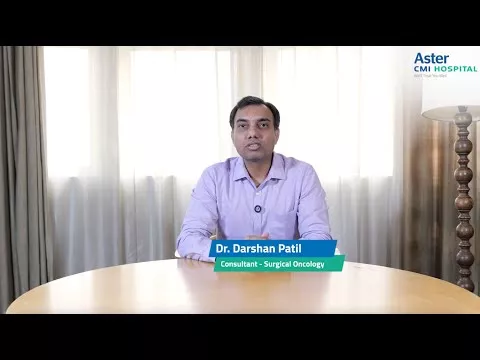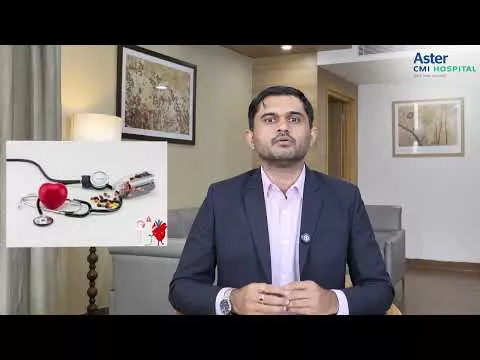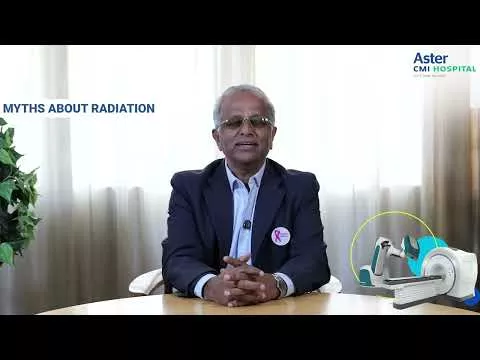Heart birth defects can be grouped into two major types, cyanotic and non-cyanotic. Cyanotic heart defects as the name suggests, present with bluish discoloration of lips and finger tips as a symptom. This is due to reduced amount of oxygen in the circulating blood. Abnormal mixing within different chambers of the heart occur in such children. Absence of this symptom does not in any way mean that the disease is less severe. Unlike in heart disease in adults, congenital heart disease means presence of structural defects in the heart. These result due to abnormal development of the heart, when the child is still in its mother’s womb. Often it is difficult to pin point the reason for occurrence of congenital heart disease in a particular baby. Over the years certain factors have been identified by the medical fraternity to carry risk of developing these defects viz prematurity, family history, genetic syndromes and maternal problems.
In this time and age these defects can be identified in the womb itself as early as the 4th month of pregnancy. A fetal echo cardiogram can reveal most defects when performed by an expert. In under developed places without access to such tests, children are often diagnosed on routine examination, or when they present with symptoms. Consulting an experienced cardiologist in Kochi Kerala can help parents get timely diagnosis and treatment options.
Affected newborns are often noticed by the mother herself. Most mothers notice poor feeding, increased effort of breathing, and persistent cough. Such children often exhibit poor weight gain, decreased activity and even delay in milestones. It has been our experience that most pediatricians who send babies to tertiary care centers are able to make a fairly accurate diagnosis. Usually at higher centers only some fine tuning is necessary. This shows the high level of efficiency at peripheral clinics also.
Busting some common myths.
The diagnosis of such disease often makes parents, grandparents and extended family worrisome and apprehensive. Many families have long awaited the arrival of their little one. Knowing that the child may need surgery, is not an easy news to bear. Surgery however, does remain the gold standard in the cure of these diseases. Specialized centers like a reputed heart hospital in Kochi Kerala ensure that children receive advanced care and improved outcomes.
Many a time in our outpatient department, parents ask whether these defects would close on their own. Well, it’s true they do close, but are limited to a few factors. The age of the child, the size of the hole and where it is located. Small atrial septal defects (ASD) are known to close spontaneously up to 1 year of age. Beyond that, close follow up and closure may be required. Atrial septal defect is repaired just before joining school.
Large ventricular septal defects (VSD) not closing within 3 months should usually be repaired. Occasionally if the defects cause heart failure, surgery can be undertaken even before this age.
Ductus arteriosus, is a blood vessel which is required for the baby in the mother’s womb that connects its aorta (major heart vessel that supplies blood to the entire body) and pulmonary artery (major heart vessel that exclusively supplies the lungs). This sometimes remains open after birth and is called patent ductus arteriosus (PDA). This can close spontaneously if small in size. But failure to close and large size may warrant surgical closure in the first month of life itself.
Children with critical congenital heart disease may require intervention even as early as first day of life. This depends on the nature and severity of the disease; and the condition of the baby. For example, conditions like pulmonary atresia, total anomalous pulmonary venous connection, hypo plastic left heart syndrome, transposition of great arteries etc. may require intervention in the first week of life itself. In transposition of great arteries the before mentioned aorta and pulmonary artery arise from the opposite chambers than which they should normally arise. Such children undergo an arterial switch operation in the first week of life, sometimes as early as the same day of birth. Almost all children receive complete cure.
Another common critical disease is tetralogy of Fallot. In my experience I’ve performed an intra-cardiac repair on affected individuals as young as 1month to as old as 55 years. In tetralogy the pulmonary artery becomes narrow and a hole between the ventricular chambers diverts all the impure blood to the left side of the heart. Such children have become cyanosed (bluish in color) and reduced oxygen levels in their blood make them unable to thrive well. These defects are repaired roughly around 6 months of age. Some unfortunate children who don’t get treatment at this age, may present with severe limitation of activity and stunted growth. Many teenagers who were bed ridden due to delayed treatment for tetralogy have got a new lease of life at out center.
Single ventricle physiology is by far the biggest challenge for any physician treating congenital heart disease. These children are born with one of their four heart chambers non -functional. The blood that has to reach their lungs get diverted, resulting in cyanosis. The treatment for this disease is a staged one. About three different operations are required to regulate and divert the blood supply back to the lungs. The surgery is in this case is palliative not an entirely curative one. But a good treatment pathway offers an excellent quality of life in these children. Many children we treated have gone on to become working professionals, sportsmen, musicians. Some girls have gotten married and now have children of their own.
The risk of operation is yet another concern for most parents. It is in fact a concern for the treating medical team too. With advancement in operative technique, anaesthesia and critical care the overall risk has come down. Complex disease can be treated with sophistication and ease. However, surgery for congenital heart disease is a major surgery and carries the same risk as any major operation. Sometimes children required extended ICU stays and some children may succumb despite all efforts by the medical team.
“Can my child go to school, with other children?” “Can my child play like normal children” “Will the surgery cause any future complications?” “Is there any special care required for my child?” I’ve heard various versions of these questions being asked at different capacities over my years as a paediatric cardiac surgeon. Most diseases like atrial and ventricular septal defect, patent ductus arteriosus, even complex lesions like transposition of great arteries once corrected offer complete cure. These children can do normal activities like other children of their age. The stigma ‘heart patient’ does not apply to these children once their treatment is complete. Some children who had staged procedures will require close follow up. This does not mean that most activities normal children do is prohibited.
Another important cause for concern for most parents is diet. Children with structural heart disease have no dietary restrictions. I usually advice parents to get children their favorite food after surgery as encouragement for their endurance. At home I always advice unrestricted feeds for infants and normal home cooked meals for older children. Common illnesses like fever, cough and cold can be treated with a local pediatrician like other children.
Sometimes guilt is a factor that overwhelms parents. I have been asked “Is it any mistake we did that caused this disease in these children?”. This is an indirect question about transmission of congenital heart disease from parents or grandparents by heredity. This is not always the case. There is scarse chance of acquiring congenital heart disease via family heredity. Also it is not very common to have a second child sibling with the same disease. Also parents having acquired heart disease (e.g. Coronary artery disease) will not cause congenital heart disease in their children.
There are a few rare disease in the spectrum of congenital heart disease that are not entirely correctable. The may need either palliation or a heart transplantation. The reason is simply due to complicated distortion of the heart structure. Heart tranplantation in newborn, infants and small children is rare mainly due to unavailability of appropriate size donors. These children may have to wait up to their teenage years to undergo a transplant.
Another doubt the public and even expecting parents have is the association of genetic syndromes with congenital heart disease. There is a strong association of genetic syndromes with congenital heart disease. This is because the alteration in a baby’s genes during fetal life will result in cardiac structural defects also. Down’s syndrome is a very commonly seen genetic anomaly in children in Kerala. Congenital heart disease is the most commonly associated lesion in these children. There is always an ethical dilemma when it comes to their treatment. Several physicians and hospital protocols feel intervening in children with Down’s syndrome does not offer benefit due to their short lifespan. We have a different view. Correcting congenital heart lesions in syndromic children will prevent heart failure and improve their quality of life. I’ve personally corrected heart lesions in several syndromic children who were denied treatment elsewhere. They did extremely well, some even attaining milestones rapidly after aversion of heart failure. It is true that children with syndromes the risk of surgery is higher and intensive care duration required may be prolonged. In my experience early treatment has shown to offer excellent results.
Some final thoughts
Those children who are not diagnosed early in life may present in adulthood. They can also be now offered effective treatment. Grown up congenital heart disease (GUCH) is an evolving branch. On a side note I’d like to give an honorable mention to my sister department, Interventional Pediatric Cardiology. The facilities available at their disposal are many. By working their magic some of these defects can be treated by cardiac catheterization (keyhole) based treatment. Some holes can be closed with a device delivered through a catheter entering through a blood vessel in the groin. Similarly a shrunken valve may be opened by a balloon mounted on a catheter. It is heartening to note that most non- complex defects are amenable to catheter based treatment giving the baby near normal life expectancy and quality of life, if not permanent cure. This mode of treatment offers excellent incision free results in eligible children. Families can rely on a trusted cardiology hospital in Kochi Kerala for such advanced interventional treatments.
Prevention of congenital heart disease may not be always possible. What expectant mothers could do is to follow a healthy life style, attending regular checkups and avoiding unnecessary medications and high risk situations. Whenever CHD is suspected, help of a pediatric cardiologist should be sought. CHD is a major contributor to infant mortality in Kerala. IMR in the state is around 10, which is far below the national average. This was possible because we could get control over infectious diseases in last 30 years or so. To further reduce infant mortality and morbidity, we have to have effective management of CHD.





